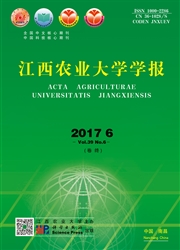

 中文摘要:
中文摘要:
市域土地整治功能分区是市级土地整治规划的重要内容。目前,我国对此问题的研究还处于起步阶段,对市域土地整治功能分区的理论与方法还没有形成统一认识。以上饶市为研究对象,提出了分区指标体系和权重,采用了系统聚类和星座图两种数学方法进行初步分区,根据分区结果差异,进行逐步细化,结合专业知识,将上饶市土地整治功能分区最终分为信江河谷平原综合整治区,东南部山地城乡统筹主导区,中东部丘陵农用地整理主导区,东北部山区城乡统筹主导区,西南部滨湖土地生态保育主导区,西北部低山综合整治区等6个土地整治主导区,分析了功能区特点,确定了土地整治重点与方向。该分区结果符合上饶市自然与社会经济条件实际,为土地整治规划的顺利实施提供保障。同时提出的分区思路与方法可以有效的解决分区过程中的一些难点问题,对进一步完善土地整治功能分区的理论与方法具有借鉴意义。
 英文摘要:
英文摘要:
Land remediation zoning is an important content of land remediation planning in city level.However,the theory and methodology of it lack unanimous acceptance and the study on this issue is in the primary stage.Taking Shangrao City as the case study area,this study first put forward the zoning indices and weights.Then clustering and constellation method were adopted to carry out the primary zoning. Based on the contrasts of the two methods and integrated with expert knowledge,six remediation zones( urban and rural integrated remediation oriented zone of south-east,integrated remediation oriented zone in the valley and flatlands of Xinjiang River,agricultural land remediation oriented zone in hills of middle east,urban and rural integrated remediation oriented zone in the mountains of north-east,land ecological protection oriented zone in the lake of south west,and integrated remediation oriented in the lower hills of north west) were established. Finally,the characteristics and the direction of land remediation were clarified,which were proved to satisfy the natural and economic condition of the study area.The idea of remediation method put forward in this paper is expected to improve the theory and methodology of land remediation zoing.
 同期刊论文项目
同期刊论文项目
 同项目期刊论文
同项目期刊论文
 期刊信息
期刊信息
